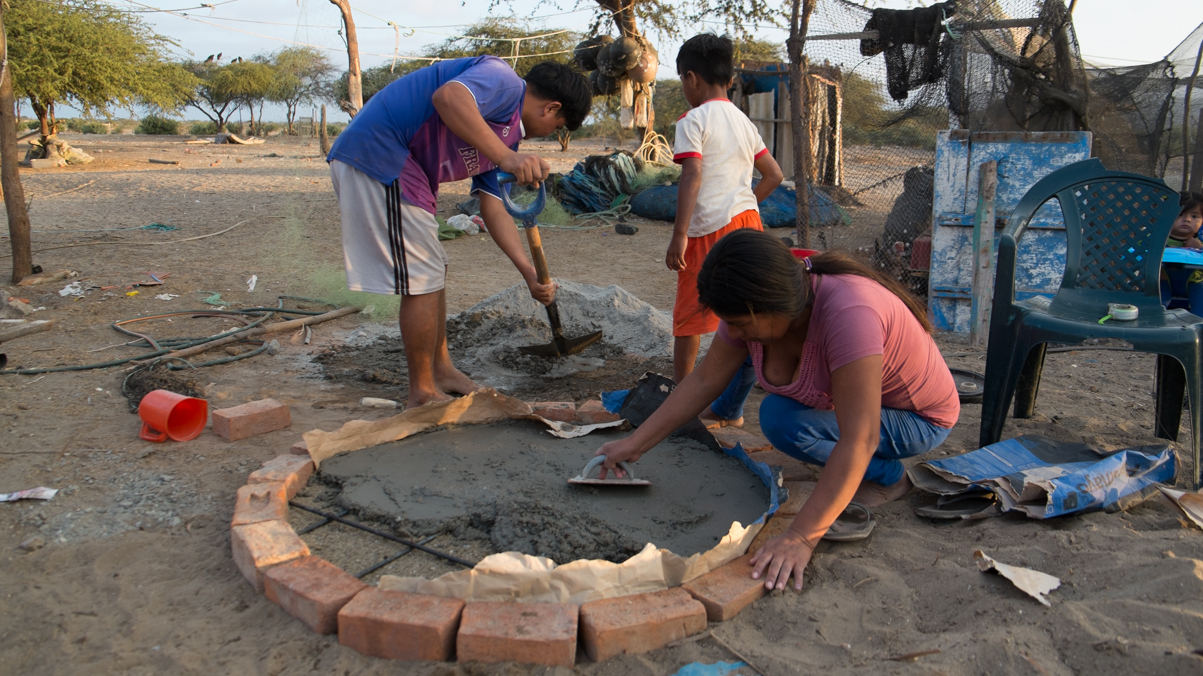The theme of World Toilet Day 2020 is "Sustainable Sanitation and Climate Change" – what are your thoughts on this?
Toilets play a key role in keeping us safe from a number of diseases but guess what: they can also help us fight climate change and build sustainable futures!
The last few years have certainly taught us that floods, droughts, winds and other extreme climatic events are a serious threat to the sustainability of our sanitation infrastructure systems. Just think about tropical storm events like Cyclone Idai, Amphan and Eta, which washed out thousands of latrines thus depriving access to sanitation services for tens of thousands of people. Drought too can have big impacts on our sanitation systems. For example, the 2019 drought in Cape Town pushed people to adopt the “if it's yellow, let it mellow” flushing strategy due to water use restrictions in the city.
Fortunately, there’s been a lot of new thinking around designing “climate smart” sanitation solutions, i.e. climate resilient sanitation systems that can also help us cut emissions and reduce our overall environmental footprint. A number of climate smart sanitation solutions already exist and are being piloted across the world (surface water treatment using constructed wetlands, composting and biogas generating toilets, etc.). These types of sanitation technologies are also an occasion for us to close the loop and turn “waste into a resource”, for example, by reusing grey and black water as input for agriculture, fish farming or electricity generation. The solution may be down the hole!
Can you share a personal experience from working on climate smart sanitation?
In 2018, I worked on co-designing a community sanitation project that was led by a Peruvian grass roots organisation called Nexos Communitarios. The aim of the project was to build eco-friendly climate resilient toilets together with local people from a Peruvian coastal community of the Sechura Desert. This village had been immensely impacted by the El Niño event of 2016-17 that lead to heavy rains and floods all across Peru and parts of Ecuador.
The community was forced to resort to open defecation as a majority of household latrines had been completely wiped out. My responsibility as a WASH Technical Specialist was to assist the community in trying to develop a toilet design that would be resistant to floods and would be built using locally sourced materials.
After briefly considering dual-chamber composting toilets and more conventional types of elevated latrine designs, the participating community members finally opted for a flush toilet with elevated dual-pits. These pits were lined with bricks and had elevated walls and a cover so that floods would not easily enter the pits. That way we could limit possibilities of having the pits collapse and overflow which would likely spread the sludge into the environment. Finding out what was technically, financially, and socially most appropriate involved a lot of discussions and back and forth. You’d be surprised how much people can get excited to talk about toilets!
Your new role is as GWP’s IWRM & Knowledge Management Specialist – what does this entail?
My role is to develop and share tools and knowledge resources that will help our partners design and implement water related strategies and projects that are aligned with the principles of IWRM.
I am part of the team that is currently involved with redeveloping GWP’s IWRM ToolBox. Our aim is to transform the ToolBox into a dynamic platform where practitioners, policy makers, government officials, academics, students, and other water actors will be able to learn and share IWRM knowledge as well as connect with each other. Several tools and case studies will be specifically developed to enhance knowledge sharing on specific technical areas including on the theme of water and climate change.
The ToolBox will therefore act as a switchboard directory for other toolkits that have been developed on specific topics, such as the tools and resources available under the WMO-GWP programme for floods, the Associated Programme for Flood Management (APFM) and the tools for drought under the Integrated Drought Management Programme (IDMP). And the Learning Modules that were developed as part of the UNICEF-GWP Strategic Framework for building the capacity of WASH practitioners in implementing WASH climate resilience programming will be also be integrated into the new ToolBox.
For more information on any of this, you are welcome to reach out to Laurent-Charles on e-mail: laurentcharles.tremblaylevesque@gwp.org
All photos from the project in Peru are provided by Nexos Communitarios.


